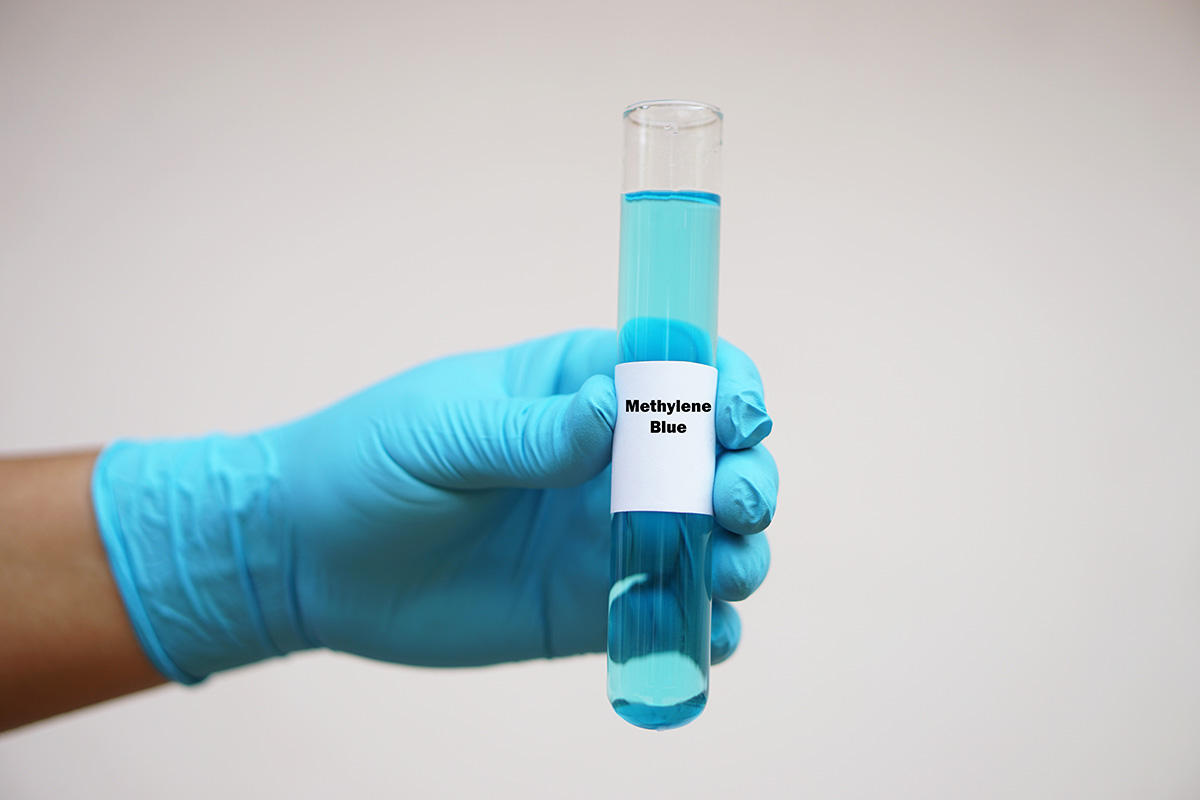Get a Free box of Gummies ($120 value) when you spend $200 or more. Now through Monday

You may have heard of Methylene Blue (MB), or you might not have, but it’s recently gained a lot of attention for some pretty amazing reasons. Historically, it was used both in medicine and outside the health field. Now, it’s showing some promise in supporting our health and wellness.
There has been a lot of focus on the role methylene blue may play in the battle against oxidative stress, supporting our mitochondria and other potential health benefits.
Though research continues to emerge regarding its potential health benefits, methylene blue should only be used under medical supervision. It’s not suitable for everyone, so be sure to talk with your healthcare provider before starting methylene blue or any supplement to determine what would be best for you.
Methylene blue, also known as methylthioninium chloride, is a man-made or synthetic dye. It has gained popularity recently, especially among the health community. But let’s see how this synthetic dye made its debut.
How did this dye come into use? Its history begins around 1876 when a German chemist worked on creating dyes for different materials, including fabrics.1 The deep blue color that eventually became popular (and still is today) for denim or “blue” jeans was due to the color of methylene blue.
Methylene blue is an FDA-approved drug with a history of medicinal use spanning over 100 years.2 It was once a common treatment for malaria several decades ago.1,3,4 The medical community also uses methylene blue in certain diagnostic procedures. A German scientist experimented with the dye while examining specimens under a microscope. He noticed that the view was much clearer when he used methylene blue.1,4 Later, researchers discovered additional medical uses for methylene blue. It became a useful contrast agent to highlight tissues and cells inside the body during certain medical tests.1
Also, Methylene blue as a medication is used in the management and treatment of a medical condition called methemoglobinemia. This condition affects the blood’s ability to efficiently carry oxygen and carbon dioxide.
There are some really amazing benefits that have been looked at by those who have been studying the potential health benefits of methylene blue. Here are the top three areas where methylene blue is showing some promise in supporting our health.
Methylene blue may be instrumental in supporting brain health. Research demonstrates that methylene blue may play a role in protecting brain cells and supporting the brain’s ability to form new connections, which is called neuroplasticity.4
There is a protein that has been found in the brains of individuals who have been diagnosed with Alzheimer’s Disease. This protein, called tau, causes tangles and clumps in the brain, which have been linked to the condition. Methylene blue may stop tau proteins from clumping together, however, research is ongoing to fully understand its effects.3,4,5 Preliminary evidence suggests that methylene blue has been shown to reduce tau levels, however, further research is warranted.5 Methylene blue may also inhibit the production of amyloid-beta, another protein associated with Alzheimer’s Disease, and may help with cognitive function.3
Supports Mitochondrial Health
Methylene blue has an affinity for the mitochondria and becomes involved in supporting the production of energy in these cellular powerhouses. Methylene blue actually helps the mitochondria to produce more cellular energy, or adenosine triphosphate, known as ATP, more efficiently by being involved in the electron transport chain.3 By improving mitochondrial health, methylene blue may help slow down age-related decline.3
Methylene blue is an antioxidant that plays a role in the helping to combat oxidative stress, which is caused by excessive free radicals that can damage cells. Mitochondrial dysfunction along with oxidative stress may actually contribute to impaired skeletal health, however, methylene blue may help to protect cells from stress and harm and support bone health.3
Though methylene blue offers some pretty promising health benefits, it is important to keep in mind that there are common side effects that may include nausea, headaches, and dizziness, to name a few. There are also serious side effects that are associated with using methylene blue. Though every person has a different health and medical history, you should never take MB on your own.
It is imperative to discuss with your healthcare provider any questions you may have about methylene blue, how it functions, benefits and risks, and if this is something that would benefit you.
Also, there are certain populations that should never use methylene blue, so it is imperative to discuss this with your HCP. A person should not attempt to try methylene blue without seeking professional medical advice.
Methylene blue shows potential health benefits, especially for brain health, aging, and cellular energy. It stimulates mitochondria, lowers oxidative stress, and guards nerve cells. As new research develops, Methylene Blue may become more important in health care and science, including for Alzheimer’s disease. Scientific studies are now exploring how methylene blue might serve as a supplement. Early research suggests potential benefits, and as science progresses, more ways to use methylene blue safely may be discovered.
Staying updated on ongoing studies helps you make informed choices. Always consult a healthcare provider before trying new supplements or treatments. With proper medical advice and supervision, methylene blue could support some people on their health journey.
Other components that play a significant role in supporting our health and wellbeing include eating a balanced diet, which is rich in antioxidants, avoiding ultra-processed foods, as well as staying well hydrated. Focusing on getting quality sleep each night and practicing stress management techniques is all part of the equation for a healthy lifestyle for the long term.
*These statements have not been evaluated by the Food and Drug Administration. These products are not intended to diagnose, treat, cure, mitigate, or prevent any disease. Individual results may vary.
References